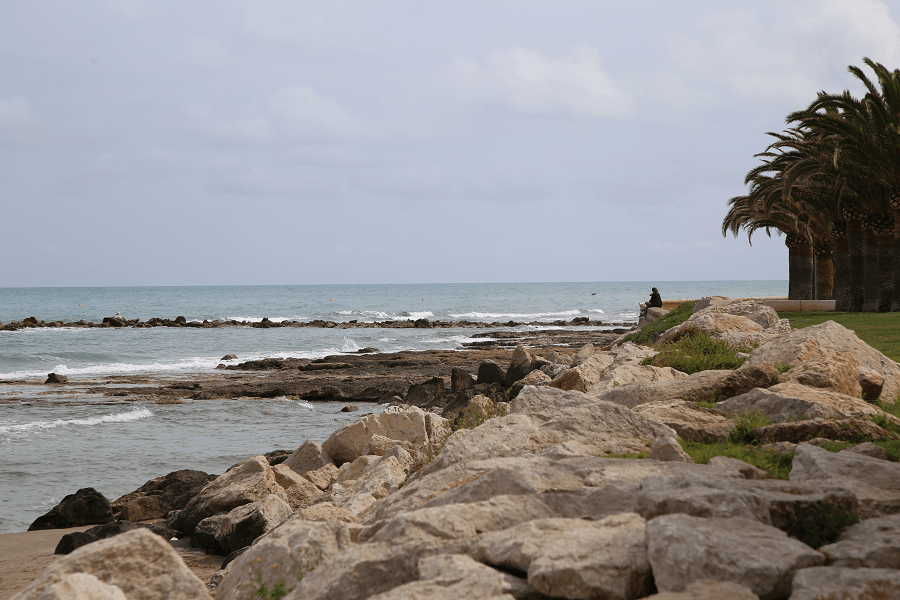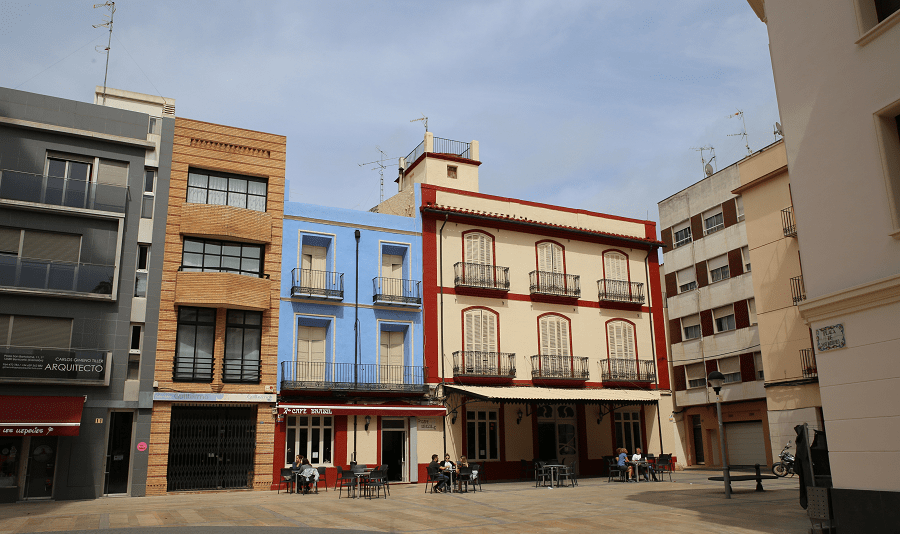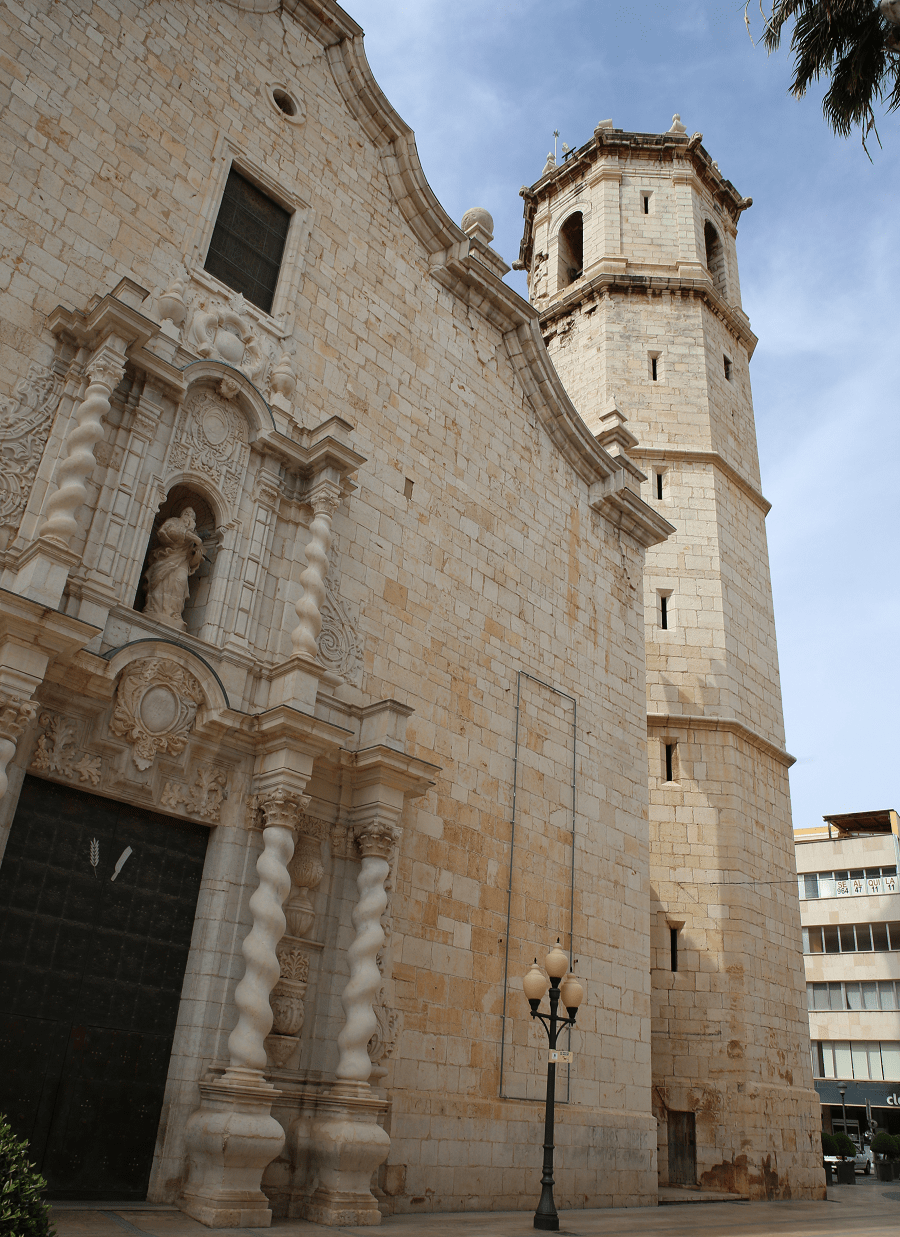Benicarló is a municipality in the Valencia Community, Spain. Located on the north coast of the province of Castellón, in the Bajo Maestrazgo region. It has a population of 27,363 inhabitants (INE, 2020).
It’s a popular part of the Costa del Azahar of the Mediterranean resorts of Spain.
Located on the shores of the Mediterranean Sea and surrounded by irrigated orchards, Benicarló has a privileged climate typical of the coast in which it is located.
This town is accessed from Castellón de la Plana via N-340 or AP-7.
Economy
Of great importance was the production of wine at the end of the 19th century, the so-called Carlón Wine, which was the largest source of wealth in the city. In 1890 17 million liters were exported. This cultivation was carried out both in the municipality of Benicarló and in the neighboring towns of Peñíscola and Vinaroz. The phylloxera plague wiped out practically all the vineyards in the area, and this wine disappeared completely.
Between 1931-1944 the current port was built, with the consequent impulse in the development of the fishing sector that, at present, maintains a fleet of more than 50 boats, which has obtained in recent years, an average of 1,500,000 kg per year of all kinds of marine species, among which the mullet, whiting, octopus, monkfish, prawns.
In the decade of the 60s of the last century, Benicarló became a receiving center for immigrants. The causes that attract this population are: the industry (among others those of the furniture, the distilleries of chemical essences and the construction) and the tourist boom. Currently citizens of various nationalities reside in the city.
Tourism and main attractions
- Chapel of Cristo del Mar (Church of San Pedro). It is located near the Port and is popularly known as the Hermitage of Cristo del Mar.
- Parish Church of San Bartolomé. From the 18th century, with a baroque façade and an octagonal bell tower. It has two bodies: the upper one formed by a large niche with the image of Saint Bartholomew that is topped by two Solomonic columns.
- Santa María del Mar Parish. In 1978 the construction works of the new parish began. It occupies a triangular shape of 777 m2, its structure and style were designed by the architect Manuel Arnau and decorated by the artist Amadeo Paltor. It is large and spacious, with capacity for more than a thousand people.
- Convent of San Francisco. Built around 1578; the Church, although reformed in the 18th century, retains its original 16th century structure. It has a single nave, without side chapels, it has a cloister of austere and simple construction, and the façade is topped by a broken-line cornice, with a stone belfry.
- Hermitage of San Gregorio. It is located two and a half kilometers from the town. It is a hermitage of ancient origin and the time of its construction is unknown; the image of San Gregorio is a polychrome wood carving, with rough but expressive features, probably from the first third of the 16th century.
- House of the Marquis of Benicarló. Located on Calle San Joaquín and was built at the end of the 18th century. It was classified as an asset of cultural interest in the province of Castellón on September 28, 2007.
- Bosch House. The Bosch house is a residential building that is located on Juan Carlos I street, 7. Built in the Valencian modernist style in the 20th century.
- Walls of Benicarló. The walls of Benicarló, in the Bajo Maestrazgo region, are a few remains of the walled enclosure cataloged as an asset of cultural interest in the province of Castellón.
- The Torre de los Mártires de Benicarló – the remains of an old watchtower that are located near the hermitage of the same name, and the fortified Iberian town “Puig de la Nau”.
- Iberian town of ” Puig de la Nao ”. The Puig de la Nao is a small mountain that is located to the north of the municipality of Benicarló, next to the channel of the Aguaoliva ravine, which serves as a natural boundary between the territory of Vinaroz and that of Benicarló. The town of Puig de la Nau is of the so-called “hillside” type, with some horizontal streets that adapt to the relief of the mountain, and others that go up to the upper part where the wall is located.
- Iberian town of Tossa is located at the top of the Tossa mountain, to the west of the Benicarló municipal area.
Restaurants
There are two Michelin list restaurants in the city:
- Raúl Resino, Alacant 2, 60 – 65 EUR • Creative cuisine (One star)
- Pau, Avenida Marqués de Benicarló 11, 16 – 44 EUR • Rice Dishes, Traditional Cuisine
Shopping
Between Pío XII Street and the Market square is Benicarló Town Market.
Hours:
Monday to Friday 9.00h – 13.30h and 18.00h – 20.30h
Saturday 9.00h – 14.00h
There is also a street market every Wednesday in Benicarló. In the area around Plaza de la Constitució between 8h and 15h there is a market with non-food items (clothes, shoes, bags, accessories, etc.).
Beaches
Caracola beach connects Benicarló and Peníscola. It is a long coastal strip of fine sand which has hardly been affected by mass tourism. Lengh: 800 m, width: 15. Has a Blue Flag.
Services: easily accessible beach, clearly signposted, parking area, showers, foot-showers, bar / restaurant, lifeguard, public transport, frequent cleaning.
Morrongo beach is located near the fishing harbour and marina. It is ideal for all the family with its fine sand, and is close to lots of bars, restaurants, cafés and hotels. Length: 240 m, width: 25 m. Has a Blue Flag.
Services: clearly signposted, parking area, showers, foot-showers, bar / restaurant, lifeguard, frequent cleaning, easily accessible beach.
Transport
The main car access road to Benicarló is the N-340a, but there are other roads that connect the city with the rest of the country.
Benicarló has an urban bus line that connects the city center with the north and south areas, which are somewhat far from this.
On the other hand, this same company offers other routes that connect Benicarló with other Castellón municipalities.
Direct line: Castellón-Vinaroz, Castellón de la Plana, Benicassim, Oropesa del Mar, Torreblanca, Alcalá de Chivert, Santa Magdalena de Pulpis, Benicarló.
From Valencia 1 hr 32 min (142 km) via AP-7
From Barcelona 2 hr 25 min (219 km) via AP-7
From Madrid 4 hr 52 min (493 km) via A-3 and AP-7
Main information
Area: 48 sq. km (municipality)
Coordinates: 40°25′07″N 0°25′23″E
Population: 27 400 (municipality)
Languages: Spanish, Valencian
Currency: Euro
Visa: Schengen
Time: Central European UTC +1
See here best sea and ocean resorts of France and Spain (223 objects)
























